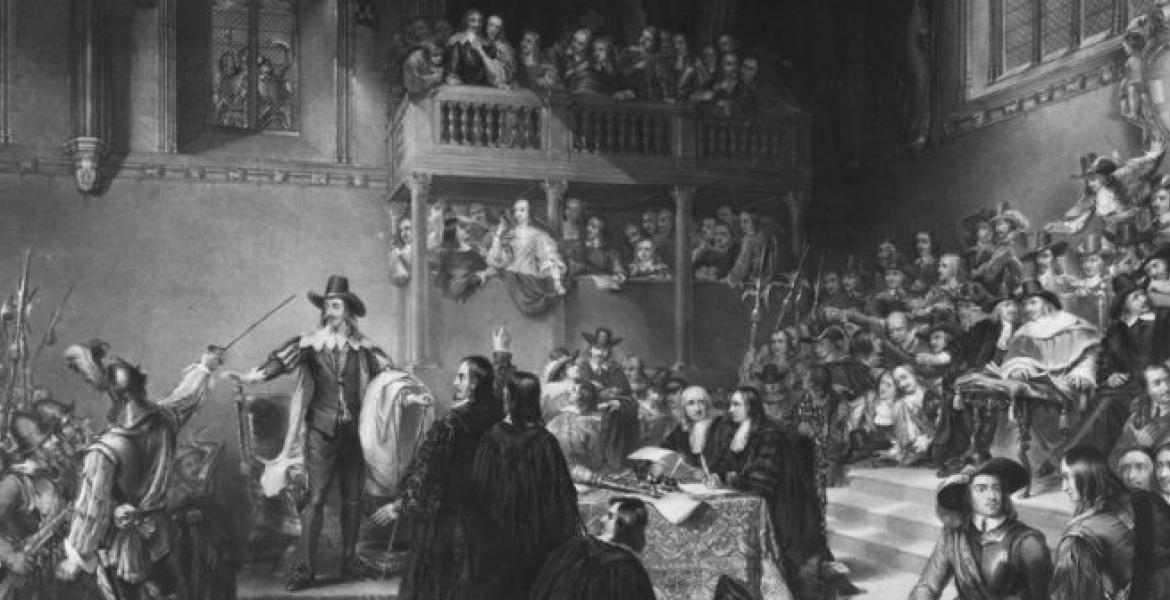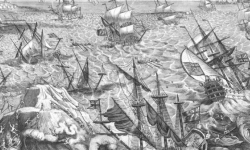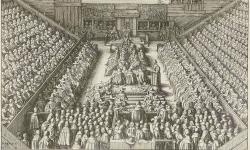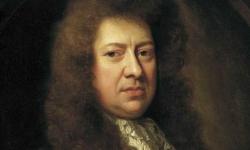The Trial and Execution of Charles I
Key Facts about the trial and execution of Charles I
- The trial of Charles I was held between 20 and 27 January 1649.
- It was a direct response to the troubles of the Civil War.
- Charles had also frustrated, disappointed, and gone against parliament before and after the first civil war.
- Charles I had a strong sense of honour, but wasn't good with people.
- Many ParliamentariansPeople supporting parliament in the civil wars; or members of parliament, particularly those who are knowledgeable about politics.People supporting parliament in the civil wars; or members of parliament, particularly those who are knowledgeable about politics. People supporting parliament in the civil wars; or members of parliament, particularly those who are knowledgeable about politics. did not want to execute Charles.
- Charles I was beheaded on 30 January 1649.
- He came to be seen as a martyr by many people.
People you need to know
- John Bradshawe – lawyer who was made president of the commission to try the king
- Charles I – king between 1625 and 1649
- Charles II – son of Charles I, who was in exile in 1649. He was invited to return to England as king in 1660.
- Rump ParliamentThe parliament that remained after the purge of moderate members in 1648.The parliament that remained after the purgeA removal of something, in biological terms often of something from the body, or in political terms an often violent removal of a group of people. of moderate members in 1648.The parliament that remained after the purgeA removal of something, in biological terms often of something from the body, or in political terms an often violent removal of a group of people. of moderate members in 1648.The parliament that remained after the purgeA removal of something, in biological terms often of something from the body, or in political terms an often violent removal of a group of people. of moderate members in 1648. – those members of parliament who remained after the purgeA removal of something, in biological terms often of something from the body, or in political terms an often violent removal of a group of people. of moderates in 1648.
- Matthew Thomlinson – a colonel in the New Model ArmyA disciplined and well-trained Parliamentary army that was created by Oliver Cromwell in 1645.A disciplined and well-trained Parliamentary army that was created by Oliver Cromwell in 1645.A disciplined and well-trained Parliamentary army that was created by Oliver Cromwell in 1645.A disciplined and well-trained Parliamentary army that was created by Oliver Cromwell in 1645. who was in charge of Charles I until Charles' execution
30 January 1649 was bitterly cold. It was enough to make Charles I, king of England, don two shirts: he didn't want the crowd to see him shivering as he was led to his place of execution. He was not the first English king to have been killed by his enemies  Several English monarchs were murdered, assassinated, executed, or died in suspicious circumstances, including Richard II, Edward II, Mary I, and Henry VI. but few had been killed so publicly and with such an air of legality. Charles' downfall, a result of his stubborn personality, bad decisions made in difficult circumstances, and disagreements with powerful men and their factions, led to the only English republic in the country's history. Yet his conduct at his trial and execution also led to the restorationThe restoration of the monarchy and the return to a pre-civil war form of government in 1660, following the collapse of the Protectorate. of the monarchyThe king/queen and royal family of a country, or a form of government with a king/queen at the head.The king/queen and royal family of a country, or a form of government with a king/queen at the head.The king/queen and royal family of a country, or a form of government with a king/queen at the head.The king/queen and royal family of a country, or a form of government with a king/queen at the head. just over ten years later.
Several English monarchs were murdered, assassinated, executed, or died in suspicious circumstances, including Richard II, Edward II, Mary I, and Henry VI. but few had been killed so publicly and with such an air of legality. Charles' downfall, a result of his stubborn personality, bad decisions made in difficult circumstances, and disagreements with powerful men and their factions, led to the only English republic in the country's history. Yet his conduct at his trial and execution also led to the restorationThe restoration of the monarchy and the return to a pre-civil war form of government in 1660, following the collapse of the Protectorate. of the monarchyThe king/queen and royal family of a country, or a form of government with a king/queen at the head.The king/queen and royal family of a country, or a form of government with a king/queen at the head.The king/queen and royal family of a country, or a form of government with a king/queen at the head.The king/queen and royal family of a country, or a form of government with a king/queen at the head. just over ten years later.
King Charles and the Civil Wars
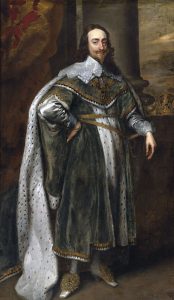
Charles, until 1612 the younger son of James I, was a stubborn king. At times he could be gracious, loyal, and the epitome of refinement and culture. He was inspired by noble ideas and the example of his father as king, and supported a balanced constitutionA body of fundamental principles and established precedents by which a state governs itself; or the composition of something.A body of fundamental principles and established precedents by which a state governs itself; or the composition of something.A body of fundamental principles and established precedents by which a state governs itself; or the composition of something.A body of fundamental principles and established precedents by which a state governs itself; or the composition of something., which he saw as the 'interchangings of love, loyalty and confidence between a prince and his people'. Quoted in Richard Cust, Charles I: A Political Life, Abingdon: Taylor & Francis (2007), p.20 He was honourable and had a strong sense of right and wrong, believing that his conscience served as the voice of God. But it was this very sense of righteousness that was his undoing. Time and again he turned criticism of policy into criticism of his royal person. In making an argument a matter of honour, he not only challenged that of his opponent, but also made it difficult to back down gracefully. As a result, both Charles and his opponents became entrenchedTo be fixed in an idea or unlikely to changeTo be fixed in an idea or unlikely to changeTo be fixed in an idea or unlikely to changeTo be fixed in an idea or unlikely to change, with little hope of compromise. This, combined with Charles' lack of political sense and inability to judge character, led to conflict with parliament, which ultimately escalated into a bloody and damaging civil war.
Quoted in Richard Cust, Charles I: A Political Life, Abingdon: Taylor & Francis (2007), p.20 He was honourable and had a strong sense of right and wrong, believing that his conscience served as the voice of God. But it was this very sense of righteousness that was his undoing. Time and again he turned criticism of policy into criticism of his royal person. In making an argument a matter of honour, he not only challenged that of his opponent, but also made it difficult to back down gracefully. As a result, both Charles and his opponents became entrenchedTo be fixed in an idea or unlikely to changeTo be fixed in an idea or unlikely to changeTo be fixed in an idea or unlikely to changeTo be fixed in an idea or unlikely to change, with little hope of compromise. This, combined with Charles' lack of political sense and inability to judge character, led to conflict with parliament, which ultimately escalated into a bloody and damaging civil war.
When Charles surrendered to the Scots in 1646, bringing an end to four years of war, many hoped a lasting settlement could be reached between the parties. Yet compromise was not what the humiliated Charles sought. Still firmly believing in his rights as king, and still harbouring a dislike of puritanismThe beliefs of people who thought that the ProtestantSomeone following the western non-Catholic Christian belief systems inspired by the Protestant Reformation. Reformation was incomplete and more reform was needed.The beliefs of people who thought that the ProtestantSomeone following the western non-Catholic Christian belief systems inspired by the Protestant Reformation. Reformation was incomplete and more reform was needed.The beliefs of people who thought that the ProtestantSomeone following the western non-Catholic Christian belief systems inspired by the Protestant Reformation. Reformation was incomplete and more reform was needed. and deep distrust of 'popularity' (what we would term 'democracy'), Charles prevaricated, hoping to open divisions within his enemy's camp and playing for time while he secretly negotiated with factions, notably in Scotland and Ireland, in the hopes of starting a second civil war.
The king eventually achieved his goal through a treaty with the Scots, but in doing so he came a step closer to sealing his fate. Not only had Charles shown that he couldn't be trusted, but that he was a 'man of blood' who sacrificed innocents while going against God's providenceGod or another spiritual entity's protective care and direction.God or another spiritual entity's protective care and direction.God or another spiritual entity's protective care and direction.God or another spiritual entity's protective care and direction.. Moderates became less willing, or able, to protect him from fierce critics in the New Model Army and parliament, and, in January 1648, the Long ParliamentFirst called in 1640, it sat until Pride's Purge in 1648. It was then recalled in 1660.First called in 1640, it sat until Pride's Purge in 1648. It was then recalled in 1660.First called in 1640, it sat until Pride's PurgeA removal of something, in biological terms often of something from the body, or in political terms an often violent removal of a group of people. in 1648. It was then recalled in 1660.First called in 1640, it sat until Pride's PurgeA removal of something, in biological terms often of something from the body, or in political terms an often violent removal of a group of people. in 1648. It was then recalled in 1660. passed the Vote of No Addresses, which formally broke off negotiations with the king. The Vote was repealed in September 1648 when the New Model Army reopened negotiations, but Charles proved to be equally as slippery as before. As Charles again played his enemies off against each other, looking for more time until a promised Irish army could be put at his disposal, it became increasingly clear that the king would have to be removed, either by forcing him into submission at a trial, or by executing him. Even so, there was still a significant number of members in parliament who preferred to treat with the king, and it took Pride's Purge on 6 December 1648 to reduce parliament from about 470 MPs to 200. More MPs excused themselves voluntarily from Parliament, either through fear of arrest or out of principle.
More MPs excused themselves voluntarily from Parliament, either through fear of arrest or out of principle.
The Trial of Charles I
After much deliberation, the trial of Charles I was set for 20 January 1649. One hundred and thirty-five commissioners, who were both judge and jury, sat under a royal coat of arms in the Great Hall of Westminster Palace, where the public could view the proceedings and where Royalists could pelt the judges with missiles as well as abuse. The lord president, John Bradshawe, had to wear a specially reinforced hat for protection. An undaunted Charles, who refused to show respect by removing his hat, sat opposite and listened as the charges against him were read:
The lord president, John Bradshawe, had to wear a specially reinforced hat for protection. An undaunted Charles, who refused to show respect by removing his hat, sat opposite and listened as the charges against him were read:
That the said Charles Stuart…out of a wicked design to erect and uphold in himself an unlimited and tyrannical power to rule according to his will, and to overthrow the rights and liberties of the people…hath traitorously and maliciously levied war against the present Parliament, and the people therein represented…the said Charles Stuart, hath caused and procured many thousands of the free people of this nation to be slain; and by divisions, parties, and insurrectionsUprisings against a person or government in power.Uprisings against a person or government in power.Uprisings against a person or government in power.Uprisings against a person or government in power. within this land, by invasions from foreign parts, endeavoured and procured by him, and by many other evil ways and means, he, the said Charles Stuart hath not only maintained and carried on the said war both by land and sea…but also hath renewed, or caused to be renewed, the said war against the Parliament and good people of this nation in this present year 1648…At this time, the new year began on Lady Day in March, so what we would consider 1649 was, according to contemporaries, still 1648. By which cruel and unnatural wars, by him, the said Charles Stuart, levied, continued, and renewed as aforesaid, much innocent blood of the free people of this nation hath been spilt, many families have been undone, the public treasure wasted and exhausted, trade obstructed and miserably decayed, vast expense and damage to the nation incurred, and many parts of this land spoiled, some of them even to desolation.
http://www.constitution.org/eng/conpur082.htm accessed on 1 February 2017
When asked how he wished to plead, Charles replied:
I would know by what power I am called hither…And when I know what lawful authority, I shall answer…In the meantime, I shall not betray my trust. I have a trust committed to me by God, by old and lawful descent. I will not betray it to answer to a new unlawful authority. England was never an elective kingdom but an hereditary kingdom for near these thousand years. Therefore, let me know by what authority I am called hither…Otherwise, I will not answer it.http://www.wwnorton.com/college/english/nael/17century/topic_3/trial.htm accessed on 1 February 2017
In refusing to plead, Charles was playing a dangerous game. Refusal to plead was taken as a tacit admittance of guilt so, theoretically, the court could have immediately moved to sentencing him. Yet to enter a plea would have been to admit the legitimacy of the court, and therefore the primacy of parliament over the monarchy. For Charles, whose conscience told him that the monarchA king, queen, or emperorA king, queen, or emperorA king, queen, or emperorA king, queen, or emperor was given his position by God, his honour dictated that he had to refuse to plea whatever the personal cost to himself.
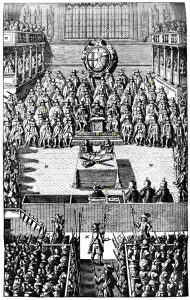
Charles was given several more chances to enter a plea during the length of the trial, which lasted for a week. Each time he refused, but in doing so he was able to direct the trial and present his own case against the court. The Rump Parliament, the king argued, was not lawful, and deserved no respect: 'I will stand as much for the privilege of the House of Commons, rightly understood, as any man here whatsoever: [but] I see no House of Lords here, that may constitute a Parliament'. Furthermore, he accused it of establishing new laws against the practice and precedent of the country, which would be damaging to everyone. 'For if power without law, may make laws, may alter the fundamental laws of the Kingdom, I do not know what subject he is in England that can be sure of his life, or any thing that he calls his own.' Charles therefore managed to present himself as standing 'more for the liberty of my people, than any here that come to be my pretended judges'. The trial thus became a piece of successful propagandaBiased and misleading information used to promote a political cause or point of view. for the future Royalist cause. Charles excelled himself, even overcoming his famous stutter, to present his arguments fluently and convincingly. Not only did it give him a chance to show the tyrannyCruel and oppressive rule or use of power.Cruel and oppressive rule or use of power.Cruel and oppressive rule or use of power.Cruel and oppressive rule or use of power. of the Rump Parliament but it allowed him to paint himself as the honourable, Christian protector of the constitution and of the people. Perhaps he hoped his rhetoricThe art of effective or persuasive speaking or writing.The art of effective or persuasive speaking or writing.The art of effective or persuasive speaking or writing.The art of effective or persuasive speaking or writing. would split the commissioners enough to avoid a conviction, but he was also arguing to lay the groundwork for a strong monarchy in the future: even if he couldn't continue as king, at least he was paving the way for his son.
Charles excelled himself, even overcoming his famous stutter, to present his arguments fluently and convincingly. Not only did it give him a chance to show the tyrannyCruel and oppressive rule or use of power.Cruel and oppressive rule or use of power.Cruel and oppressive rule or use of power.Cruel and oppressive rule or use of power. of the Rump Parliament but it allowed him to paint himself as the honourable, Christian protector of the constitution and of the people. Perhaps he hoped his rhetoricThe art of effective or persuasive speaking or writing.The art of effective or persuasive speaking or writing.The art of effective or persuasive speaking or writing.The art of effective or persuasive speaking or writing. would split the commissioners enough to avoid a conviction, but he was also arguing to lay the groundwork for a strong monarchy in the future: even if he couldn't continue as king, at least he was paving the way for his son. The commissioners could also see the immediate accessionThe attainment or acquisition of a position of rank or power, often related to the throne.The attainment or acquisition of a position of rank or power, often related to the throne. The attainment or acquisition of a position of rank or power, often related to the throne. of Charles II as an outcome of Charles I's execution, and so took steps after sentence was passed to make the proclamationA public or official announcement dealing with a matter of great importanceA public or official announcement dealing with a matter of great importanceA public or official announcement dealing with a matter of great importanceA public or official announcement dealing with a matter of great importance of a new king illegal. But more than that, he was remaining true to his conscience, saying, 'This many-a-day all things have been taken away from me, but that that I call more dear to me than my life, which is my conscience, and my honour'.
The commissioners could also see the immediate accessionThe attainment or acquisition of a position of rank or power, often related to the throne.The attainment or acquisition of a position of rank or power, often related to the throne. The attainment or acquisition of a position of rank or power, often related to the throne. of Charles II as an outcome of Charles I's execution, and so took steps after sentence was passed to make the proclamationA public or official announcement dealing with a matter of great importanceA public or official announcement dealing with a matter of great importanceA public or official announcement dealing with a matter of great importanceA public or official announcement dealing with a matter of great importance of a new king illegal. But more than that, he was remaining true to his conscience, saying, 'This many-a-day all things have been taken away from me, but that that I call more dear to me than my life, which is my conscience, and my honour'. http://www.constitution.org/primarysources/charles.html accessed on 1 February 2017 'Charles, then, refused to give the junto leadership what it wanted because, in the final analysis, he was more afraid of God's judgement than he was of death.'
http://www.constitution.org/primarysources/charles.html accessed on 1 February 2017 'Charles, then, refused to give the junto leadership what it wanted because, in the final analysis, he was more afraid of God's judgement than he was of death.'
Cust, Charles I, p.460 Despite his impressive speeches and his delaying tactics, the court agreed a sentence, which was delivered to Charles on 27 January 1649:
Now, therefore, upon serious and mature deliberation of the premises and consideration had of the notoriety of the matters of fact charged upon him as aforesaid, this court is in judgment and conscience satisfied that he, the said Charles Stuart, is guilty of levying war against the said Parliament and people, and maintaining and continuing the same, for which in the said charge he stands accused. And by the general course of his government, counsels, and practices, before and since this Parliament began, which have been and are notorious and public, and the effects whereof remain abundantly upon record, this court is fully satisfied in their judgments and consciences that he hath been and is guilty of the wicked designs and endeavours in the said charge set forth; and that the said war hath been levied, maintained, and continued by him as aforesaid, in the prosecution and for the accomplishment of the said designs; and that he hath been and is the occasioner, author, and continuer of the said unnatural, cruel, and bloody wars, and therein guilty of High Treason and of the murders, rapines, burnings, spoils, desolations, damage, and mischief to this nation acted and committed in the said war and occasioned thereby.
For all which treasons and crimes this court doth adjudge that he, the said Charles Stuart, as a tyrantA cruel and oppressive ruler unrestrained by law or other people, although the early ancient Greeks used it to refer to anyone with absolute power.A cruel and oppressive ruler unrestrained by law or other people, although the early ancient Greeks used it to refer to anyone with absolute power. A cruel and oppressive ruler unrestrained by law or other people, although the early ancient Greeks used it to refer to anyone with absolute power. , traitor, murderer, and public enemy to the good people of this nation, shall be put to death by the severing of his head from his body.
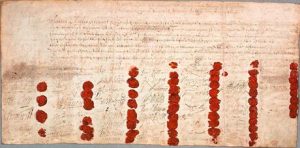
Charles seemed shocked to hear the sentence: he lost his composure and started to request to speak again. But John Bradshawe, the president of the court, had the guards take him away. Charles was led out of the room with his final retort, 'I am not suffered for to speak. Expect what justice other people will have', hanging in the air. quoted in Cust, Charles I, p.459. As Charles had been sentenced to death, legally he was considered already dead and therefore could not be allowed to speak.
quoted in Cust, Charles I, p.459. As Charles had been sentenced to death, legally he was considered already dead and therefore could not be allowed to speak.
The execution of Charles I
With sentence passed, Charles accepted his fate with remarkable equanimity. He felt redeemed in his choice, knew himself to be right in having stuck by his conscience, and believed himself to be assured of going to Heaven. He spent much of his time before his execution in prayer, but also in establishing an effective legacy for his son.
He was therefore composed when he went to the scaffold outside Banqueting House at Whitehall on Saturday 30 January 1649. A great rabble had assembled to watch the historic event, and the crowd was so great that Charles addressed his final speech to his guard, Colonel Thomlinson.
I think it is my duty to God first and to my country for to clear myself both as an honest man and a good King, and a good Christian. I shall begin first with my innocence. In troth I think it not very needful for me to insist long upon this, for all the world knows that I never did begin a war with the two Houses of Parliament. And I call God to witness, to whom I must shortly make an account, that I never did intend for to encroach upon their privileges…I do believe that ill instruments between them and me has been the chief cause of all this bloodshed. So that, by way of speaking, as I find myself clear of this, I hope, and pray God, that they may too. Yet, for all this, God forbid that I should be so ill a Christian as not to say God's judgements are just upon me. Many times he does pay justice by an unjust sentence, that is ordinary. I will only say this, that an unjust sentence that I suffered for to take effect, is punished now by an unjust sentence upon me.…This is a reference to Charles' decision to allow the execution of his favourite, Thomas Wentworth, Earl of Strafford.
I have forgiven all the world, and even those in particular that have been the chief causes of my death. Who they are, God knows, I do not desire to know, God forgive them. But this is not all, my charity must go further…for my charity commands me not only to forgive particular men, but my charity commands me to endeavour to the last gasp the Peace of the Kingdom…
Believe it you will never do right, nor God will never prosper you, until you give God his due, the King his due, that is, my successors, and the People their due, I am as much for them as any of you…And truly I desire their liberty and freedom as much as anybody whomsoever. But I must tell you that their liberty and freedom consists in having of government; those laws by which their life and their goods may be most their own. It is not for having share in government, Sir, that is nothing pertaining to them. A subject and a sovereign are clean different things, and therefore until they do that, I mean, that you do put the people in that liberty as I say, certainly they will never enjoy themselves…
I tell you, and I pray God it be not laid to your charge, that I am the martyr of the people…I have delivered my conscience. I pray GOD that you do take those courses that are best for the good of the Kingdom and your own salvations…I die a Christian, according to the profession of the Church of England, as I found it left me by my father.Merry Wiesner‐Hanks, Early Modern Europe 1450-1789, Cambridge: Cambridge University Press (2013) accessed at http://www.cambridge.org/features/wiesnerhanks/downloads/primary_sources/Primary_sources_CH09.pdf on 1 February 2017
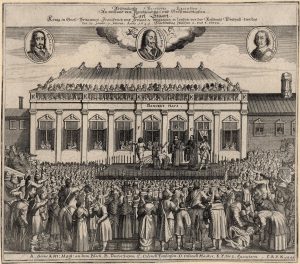
The king took a moment to collect himself before lying down and placing his head on the block. The block was raised just eight inches high, and staples had been hammered in next to it, to hold the King if he refused to submit. Charles was perturbed by the height of the block, twice asking if it could be raised, but to no avail. He therefore had to lie prostrate on the ground: an undignified end to a dignified speech. 'And after a very little pause, the King stretching forth his hands, the executioner at one blow severed his head from his body. When the Kings head was cut off, the executioner held it up and shewed it to the spectators.'
The block was raised just eight inches high, and staples had been hammered in next to it, to hold the King if he refused to submit. Charles was perturbed by the height of the block, twice asking if it could be raised, but to no avail. He therefore had to lie prostrate on the ground: an undignified end to a dignified speech. 'And after a very little pause, the King stretching forth his hands, the executioner at one blow severed his head from his body. When the Kings head was cut off, the executioner held it up and shewed it to the spectators.' ibid But the crowd hadn't been baying for blood. As one observer recorded, as the axe struck, 'a groan such as I have never heard before and desire I may never hear again'
ibid But the crowd hadn't been baying for blood. As one observer recorded, as the axe struck, 'a groan such as I have never heard before and desire I may never hear again' Quoted in Christopher Hibbert, Charles I, London: Weidenfeld & Nicolson (1968) p.280 arose from the onlookers and, against custom, the executioner did not say the usual phrase of 'behold the head of a traitor'. The next day, his head was sown back on, and he was buried next to Henry VIII and Jane Seymour in St George's Chapel in Windsor.
Quoted in Christopher Hibbert, Charles I, London: Weidenfeld & Nicolson (1968) p.280 arose from the onlookers and, against custom, the executioner did not say the usual phrase of 'behold the head of a traitor'. The next day, his head was sown back on, and he was buried next to Henry VIII and Jane Seymour in St George's Chapel in Windsor.
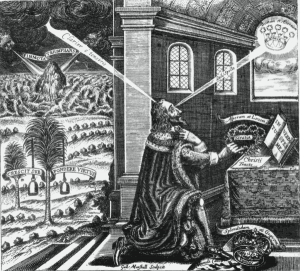
It was not long after Charles' execution that he began to assume martyr status. Handkerchiefs that were dipped in his pooling blood allegedly went on to perform miracles. Books were printed adding to his myth, and, on the days around his execution one was published under Charles' name, called Eikon Basilike: The Portraiture of his Sacred Majesty in his Solitudes and Sufferings. There has long been a debate over the author of this work. Royalists believed that Charles himself had written it, although this was questioned by the likes of John Milton at the time. However, evidence points to it being written by the Restoration Bishop of Exeter, John Gauden. More recent scholarship suggests that it was a joint affair: Charles provided the substance and perhaps some of the text and Gauden wrote the rest. Despite attempts at censorship, it became an international bestseller, with 36 editions in its first year and prints in five different languages.
There has long been a debate over the author of this work. Royalists believed that Charles himself had written it, although this was questioned by the likes of John Milton at the time. However, evidence points to it being written by the Restoration Bishop of Exeter, John Gauden. More recent scholarship suggests that it was a joint affair: Charles provided the substance and perhaps some of the text and Gauden wrote the rest. Despite attempts at censorship, it became an international bestseller, with 36 editions in its first year and prints in five different languages.
In many respects, Charles' legacy was stronger than his reign. The myth that sprang up around his death, the way he had presented himself towards the end, both in court and immediately before his execution, and his attack on the legitimacy of the Rump Parliament sustained Royalists through the 1650s. This, in turn, allowed the return of the monarchy in the form of Charles I's son, Charles II, in 1660. It was, perhaps, the greatest political success he'd ever achieved.
Things to think about
- Could the execution of Charles I have been avoided?
- Was Charles' character fundamentally flawed?
- Would Charles I ever have made a good king?
- Did Charles have a point?
- What can we learn about parliament, the constitution, and the monarchy from the trial and execution of Charles I?
- Was the execution of Charles legal?
Things to do
- There's a wealth of primary sourceis information that comes from or close to the event or person being studied.is information that comes from or close to the event or person being studied.is information that comes from or close to the event or person being studied.is information that comes from or close to the event or person being studied. material on the trial and execution of Charles I online. Try looking at the information provided by the National Archives and the Constitution Society.
- You can visit St George's Chapel, the final resting place of Charles I as well as many other monarchs, when you purchase a ticket for Windsor Castle. Further information can be found here.
- You can visit the spot where Charles was executed when you visit Banqueting House. You can find out more information about visiting and buy tickets here.
Further reading
One of the best biographies of Charles I is Richard Cust's Charles I: A Political Life. A briefer biography, which is part of the Penguin Monarchs series, is Mark Kishlansky's Charles I: An Abbreviated Life. An excellent book on the Civil Wars with lots of primary source material is Tristram Hunt's The English Civil War at First Hand.
- Log in to post comments


